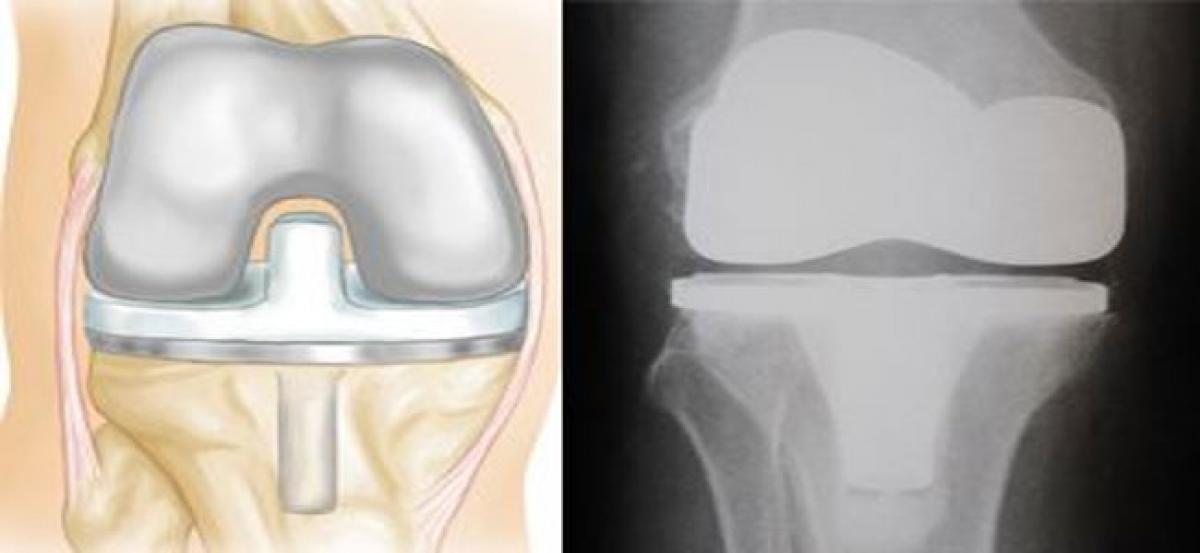Live
- Accused in stone pelting case arrested
- AAP Nominates Mayor and Deputy Mayor Candidates For Delhi MCD Elections
- Hyderabad: Eatala, Raghunandan, DK Aruna file nomination papers
- Chandrababu to hold Praja Galam election campaign in Kurnool today
- Rajasthan CM casts his vote, says BJP will repeat history
- Ex-MP CM Kamal Nath, son Nakul Nath cast votes in Chhindwara
- Hyderabad: HC directs police to permit Hanuman Vijaya Yatra rally with 100 bikes on April 23
- LS polls: PM Modi to campaign in UP, MP and Maharashtra today
- ‘Narmada Pushkara Kshetra Darsini’ book released
- Gold rates in Delhi slashes, check the rates on 19 April 2024
Just In

With advancements in the field of knee replacement surgeries, PINLESS ComputerNavigated surgeries are precise and have best outcomes It is a stateoftheart surgical technique which raises the accuracy up to 999 per cent, improving the longevity and better functioning of the implanted joints
With advancements in the field of knee replacement surgeries, PINLESS Computer-Navigated surgeries are precise and have best outcomes. It is a state-of-the-art surgical technique which raises the accuracy up to 99.9 per cent, improving the longevity and better functioning of the implanted joints.
There is a common belief that patients with concomitant medical diseases like heart problems and diabetes cannot undergo such surgeries. But, over 50 per cent of the patients who underwent surgery were on medication for heart diseases, 30 per cent of them were suffering from diabetes and 10 per cent were obese to very obese (BMI>30). All such patients showed excellent results and benefitted from the new technique.
Though ‘conventional’ computer navigated surgeries have been in practice for the last 20 years, it was not so popular due to the possibility of serious complications like drilling pins in the thigh bone and the added risk of fractures and infections. But, the latest state-of-the-art PINLESS Computer Navigation eliminates the need of any drilling, thereby avoiding any risks and complications associated with the earlier version.
This has proved to be an excellent tool for reducing the proportion of outliers, without significantly increasing the duration and risk of surgery. The systems have been developed to improve the positioning of the prosthesis (artificial knee) components, and balancing of the knee, with a goal of improving the alignment, which in turn, is aimed to improve the overall life of an artificial knee.
PINLESS computer-navigated system for knee replacement has shown to markedly reduce outliers of misalignment of the artificial knee, when compared to the conventional technique, said Dr Anil Arora, senior director and unit head, Dept of Orthopedics and Joint Replacement, Max Super Specialty Hospital, Patparganj, Delhi.
Many such patients have been treated over the years, Arora said. Patients undergoing computer navigated bilateral knee replacements at Max Hospital, namely Radhey Shyam Narula, Sushila Narula, Mukesh Kumar Sharma, Geeta Batra, Varsha Arora, SK Arora, bear testimony to it, he added. The patients had severe pain in both the knees and had difficulty walking even 50 meters. But after undergoing the surgery, all of them were able to walk for up to 5 km without any pain and assisted support, the doctor said.
“PINLESS computer navigated knee replacement assures complete correction of deformities. It also decreases the chances of life-threatening complication of fat embolism, a piece of intravascular fat that blocks blood flow. It uses special sterile probes which are moved evenly around the affected knee during the surgery to create a 3-dimensional model of the patient’s knee in the computer with the help of an infrared camera. With the guidance of computer-navigated system for knee replacement, the knee is then replaced, and the position of implant can be confirmed, to be almost hundred percent sure of positioning and balancing,” Arora said.
A perfectly-aligned knee lasts longer. The surgery is a minimally invasive surgery that allows a speedy recovery. Just within four hours of surgery, patients can start walking. The PINLESS method provides real-time 3-D imaging and guides the surgeons with accuracy, allowing better and precise placement of the implant.
BY Dr Anil Arora

© 2024 Hyderabad Media House Limited/The Hans India. All rights reserved. Powered by hocalwire.com







